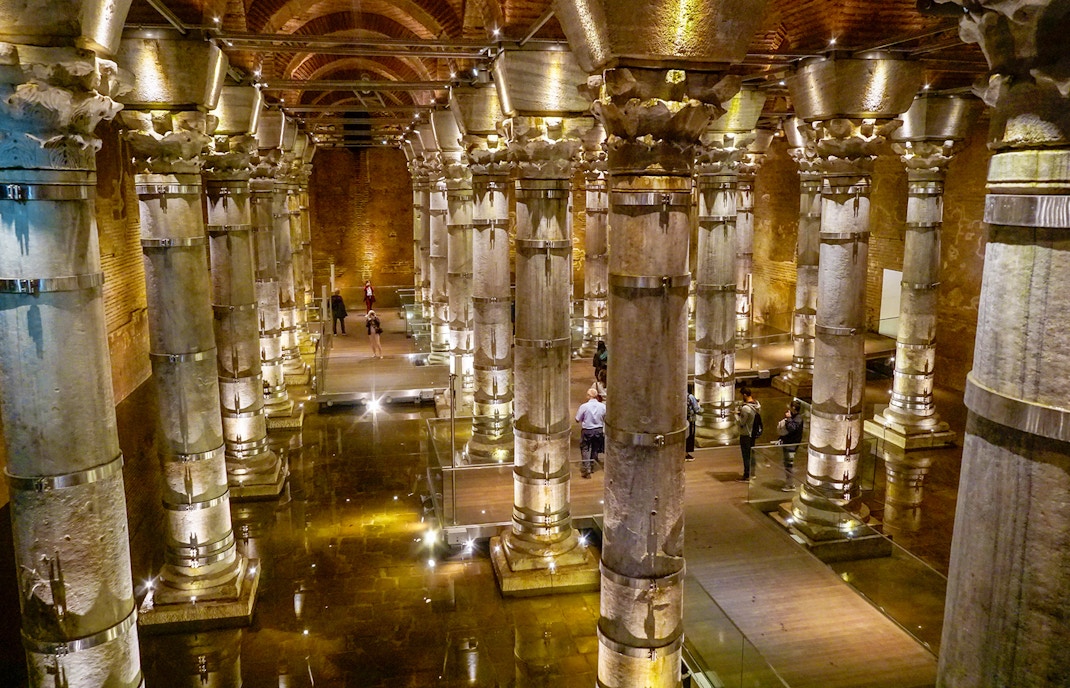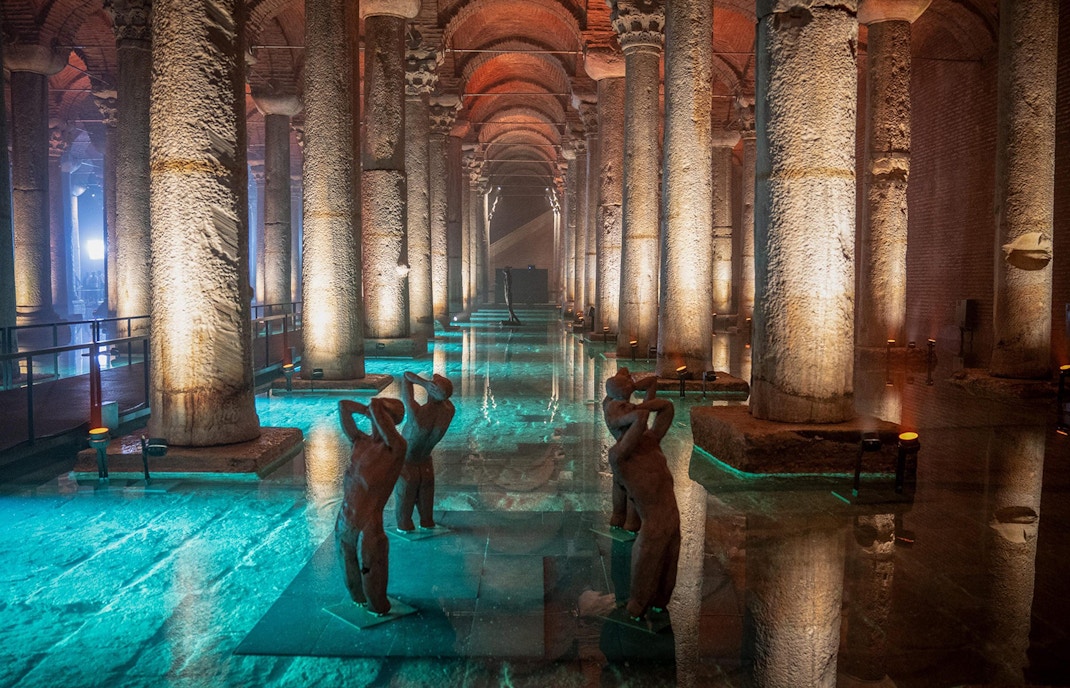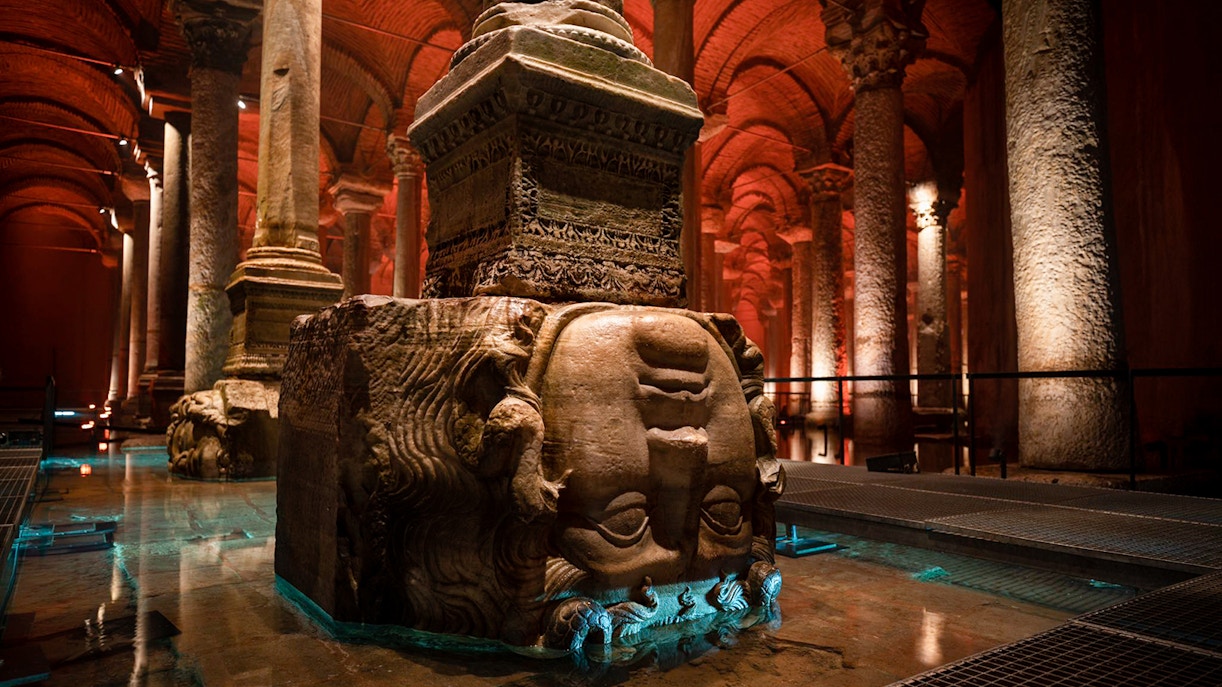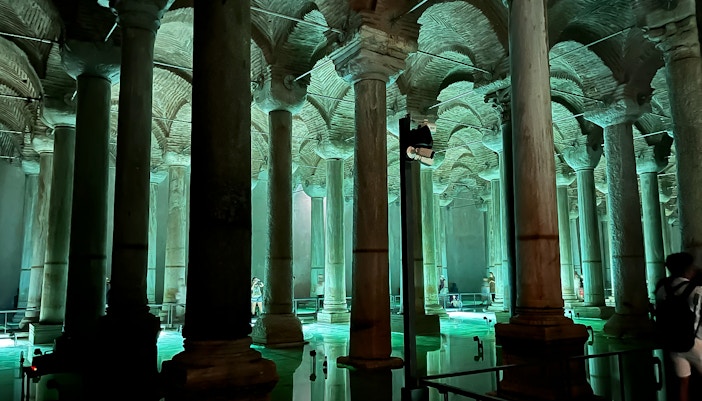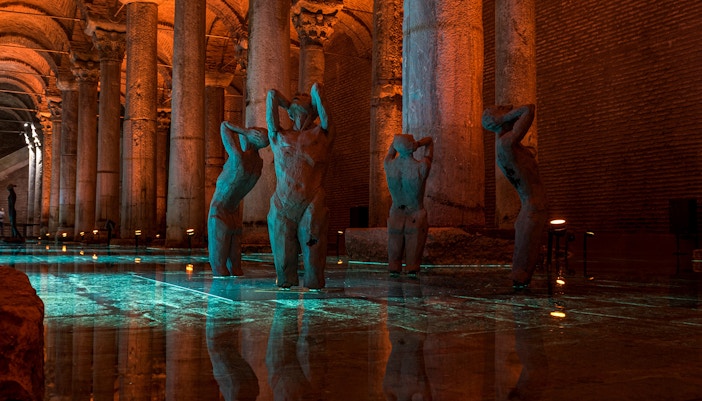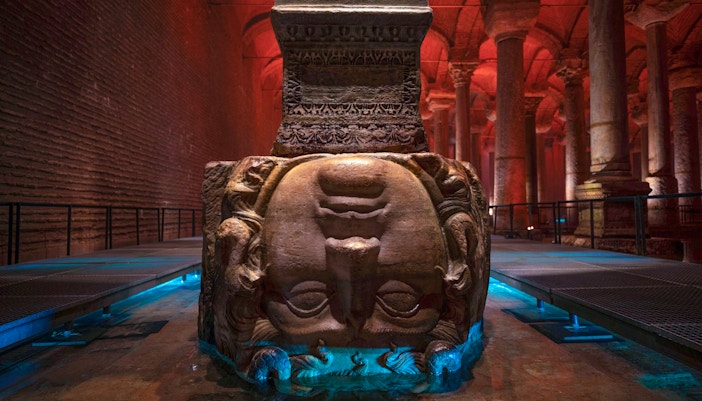The Basilica Cistern has two Medusa heads, one placed sideways and the other upside down. The structures have been repurposed from older relics and add an air of grandeur and mystery to the water palace.
Things to see inside the Basilica Cistern
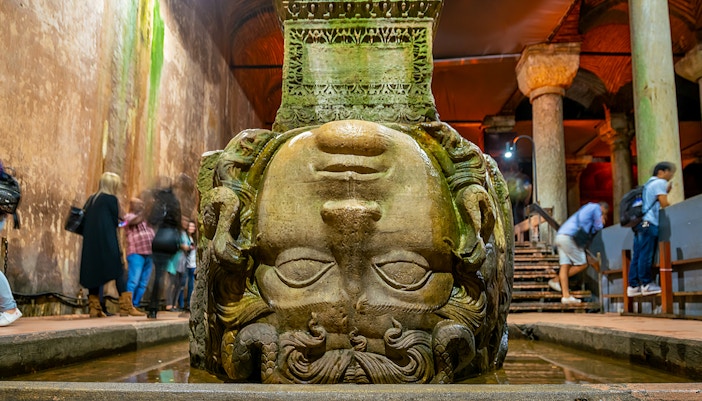
Medusa Heads
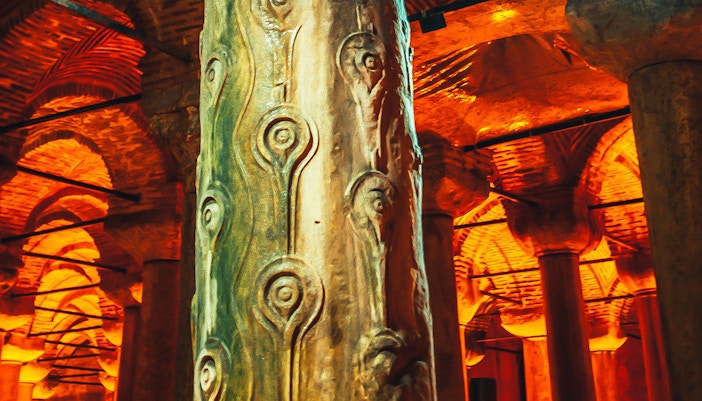
Weeping Column
It is believed that in the 38 years that it took to build the cistern, several hundred slaves died. The cistern has a ‘Weeping Column’, engraved with peacocks, drooping branches, and tree leaves to honor their memory.
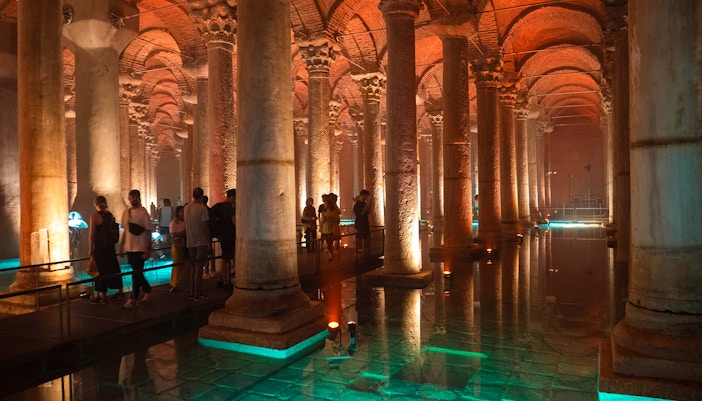
Stone staircase
When you enter the cistern, you have to descend a 52-step stone ladder to get to the marble columns and Medusa heads. As you descend the steps, you will slowly see the columns and the water rising into view.
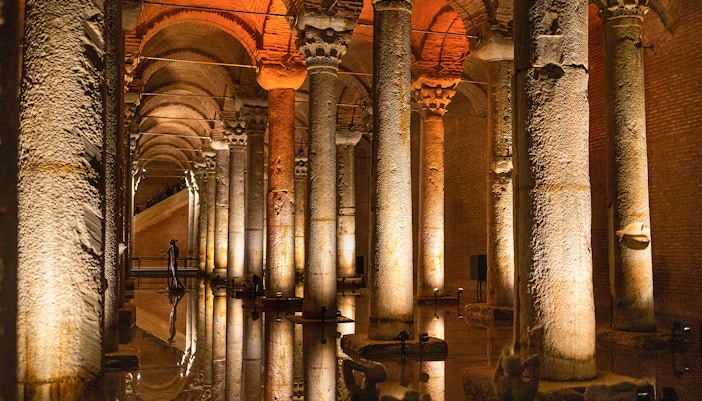
Marble columns
One of the biggest highlights of the Basilica Cistern museum is its 336 marble columns, which stand tall and support the roof. These columns showcase different styles and carvings, adding to the architectural beauty of the water palace.
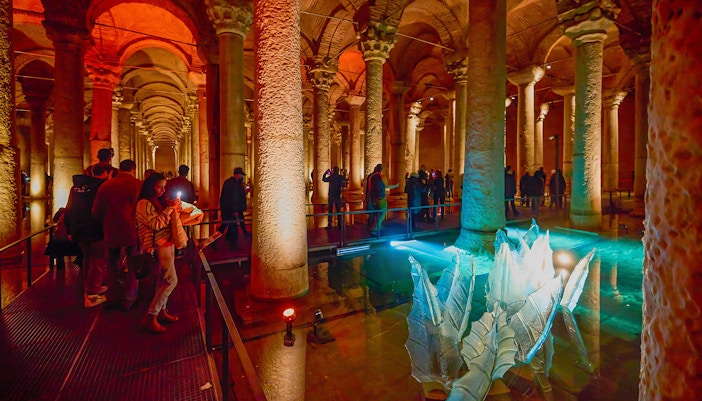
Wooden walkways
When exploring the cistern, you have to use the wooden walkways to get up close to the chambers and columns. These walkways provide a convenient and safe way to explore the architectural beauty of the underground cistern.
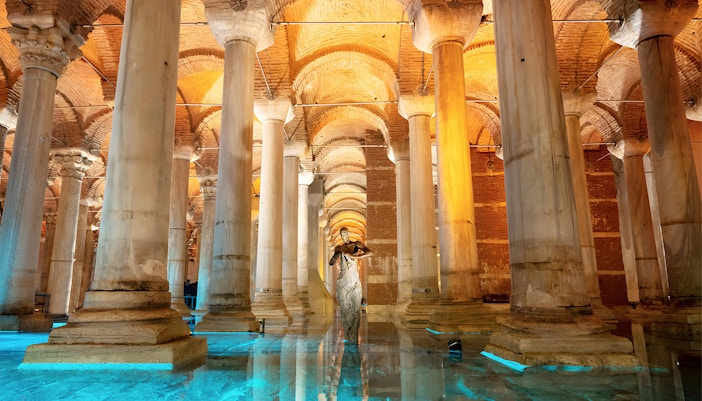
Reflective waters
Take in the tranquil sight of the water-filled cistern. The mirror-like reflections make you ponder on the engineering marvel, that is the cistern, which once supplied water to the Great Palace of Constantinople.
